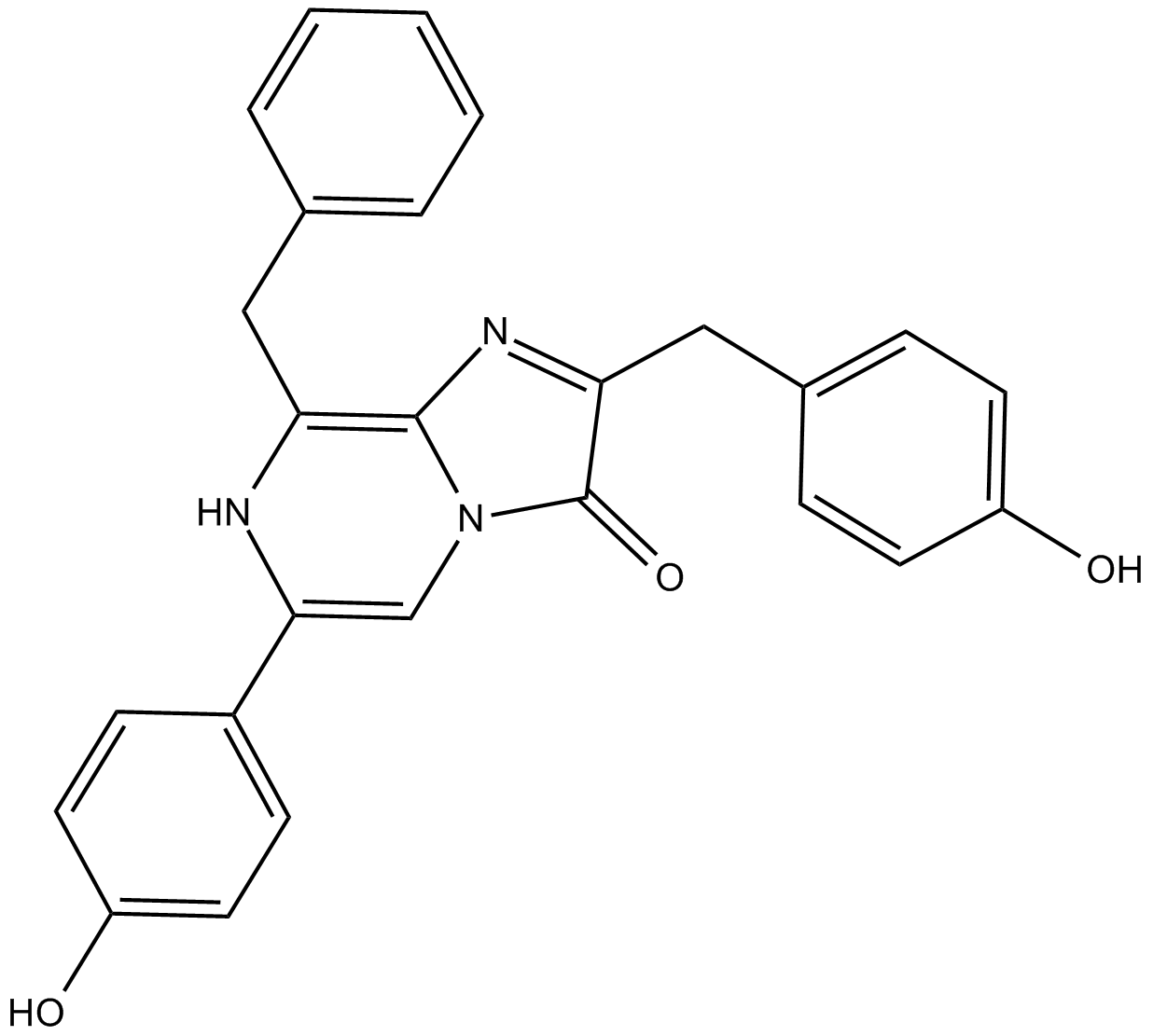Coelenterazine
Target: superoxide anion
IC50: 69 μM (rat hepatocytes cells)
The small molecule coelenterazine, a luminescent enzyme substrate, can react with the reactive oxygen species (ROS) superoxide anion and peroxynitrite and produce a chemiluminescent signal [1]. Therefore, coelenterazine is used for monitoring reporter genes in ELISA, BRET, and HTS techniques. Reactive oxygen species (ROS) play an important role in tumor development and survival and it is a new treatment strategy to target the cancer-specific ROS.
In vitro: Coelenterazine showed antioxidative properties in primary cultures of rat hepatocytes subjected to the oxidant tert-butyl hydroperoxide (t-BHP). Coelenterazine (3-10 μM) concentration-dependently increased survival and decreased lipid peroxidation in rat hepatocytes treated for 6 hr with t-BHP (250 μM) [2]. In addition, Coelenterazine (10 μmol/l) can be used to assay superoxide anion concentrations in cancer cell lines [1].
In vivo: the small molecule coelenterazine (5 mg/kg, intravenous administration) was a potential reporter of cancer-associated superoxide anion in the 4T1 breast adenocarcinoma mouse model [1]. Gli36-Rluc or Gli36-Gluc cells were injected into the leg muscle of nude mice. The mice were injected with 4 mg/kg of coelenterazine and imaged by a cooled charge-coupled device camera [3].
References:
1. Bronsart LL, Stokes C, Contag CH. Multimodality Imaging of Cancer Superoxide Anion Using the Small Molecule Coelenterazine. Mol Imaging Biol. 2016;18(2):166-71.
2. Dubuisson ML, de Wergifosse B, Trouet A, Baguet F, Marchand-Brynaert J, Rees JF. Antioxidative properties of natural coelenterazine and synthetic methyl coelenterazine in rat hepatocytes subjected to tert-butyl hydroperoxide-induced oxidative stress. Biochem Pharmacol. 2000;60(4):471-8.
3. Morse D, Tannous BA. A water-soluble coelenterazine for sensitive in vivo imaging of coelenterate luciferases. Mol Ther. 2012;20(4):692-3.
| Physical Appearance | A crystalline solid |
| Storage | Store at -20°C,protect from light |
| M.Wt | 423.46 |
| Cas No. | 55779-48-1 |
| Formula | C26H21N3O3 |
| Solubility | ≥42.3 mg/mL in DMSO; 0.97 mg/mL in EtOH with ultrasonic; insoluble in H2O,EtOH is recommended for solubilization,as DMSO can inactivate Coelenterazine's activity |
| Chemical Name | 8-benzyl-2-(4-hydroxybenzyl)-6-(4-hydroxyphenyl)imidazo[1,2-a]pyrazin-3(7H)-one |
| SDF | Download SDF |
| Canonical SMILES | OC1=CC=C(CC(C2=O)=NC3=C(NC(C4=CC=C(O)C=C4)=CN32)CC5=CC=CC=C5)C=C1 |
| Shipping Condition | Small Molecules with Blue Ice, Modified Nucleotides with Dry Ice. |
| General tips | We do not recommend long-term storage for the solution, please use it up soon. |
Quality Control & MSDS
- View current batch:
Chemical structure








